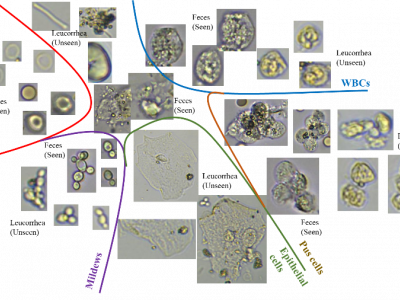Artificial Intelligence
A new generation of computer vision, namely event-based or neuromorphic vision, provides a new paradigm for capturing visual data and the way such data is processed. Event-based vision is a state-of-art technology of robot vision. It is particularly promising for use in both mobile robots and drones for visual navigation tasks. Due to a highly novel type of visual sensors used in event-based vision, only a few datasets aimed at visual navigation tasks are publicly available.
- Categories:
 1120 Views
1120 Views
The availability of labelled Cyber Bulling Types dataset has been exhibited for high profile Natural Language Processing (NLP), which constantly leads the advancement of constructing and model creation-based text. I aim at extracting diverse and efficient Cyber Bully Tweets from the Twitter Social Media Platform. This dataset contains 5 types of cyber bullying samples. They are
1. Sexual Harassment
2. Doxing
3. Cyberstalking
- Categories:
 6685 Views
6685 ViewsAspect Sentiment Triplet Extraction (ASTE) is an Aspect-Based Sentiment Analysis subtask (ABSA). It aims to extract aspect-opinion pairs from a sentence and identify the sentiment polarity associated with them. For instance, given the sentence ``Large rooms and great breakfast", ASTE outputs the triplet T = {(rooms, large, positive), (breakfast, great, positive)}. Although several approaches to ASBA have recently been proposed, those for Portuguese have been mostly limited to extracting only aspects without addressing ASTE tasks.
- Categories:
 525 Views
525 ViewsThe dataset contains the navigation measurements obtained in the indoor experiment field. The volunteers move on the whole 4th floor of the Building D of Dong Jiu Teaching classes at Huazhong University of Science and Technology. Meanwhile, the experimental area consists of a total area of 717 m 2. These datasets were used and can be used to test and validate the radio map database updating-based localization positioning algorithm through the RSSI signals space.
- Categories:
 1381 Views
1381 ViewsMost of Facial Expression Recognition (FER) systems rely on machine learning approaches that require large databases (DBs) for an effective training. As these are not easily available, a good solution is to augment the DBs with appropriate techniques, which are typically based on either geometric transformation or deep learning based technologies (e.g., Generative Adversarial Networks (GANs)). Whereas the first category of techniques have been fairly adopted in the past, studies that use GAN-based techniques are limited for FER systems.
- Categories:
 2063 Views
2063 Views
The file contains the source code of the mission generator MG1 together with the materials and results of the experiments. This data is associated with a paper in which we focus on an experimental protocol for the comparison of fully-automatic design methods of control software for robot swarms.
- Categories:
 105 Views
105 Views
数据集收集于 2009 年至 2010 年,通常用于预测学生的表现和个性化。在学生信息方面,此数据集包含 525,535 行学生答案,包括 4,217 名学生和 124 种技能。
- Categories:
 165 Views
165 Views(Work in progress)
This dataset contains the augmented images and the images & segmentation maps for seven handwashing steps, six of which are prescirbed WHO handwashing steps.
This work is based on a sample handwashing video dataset uploaded by Kaggle user real-timeAR.
- Categories:
 336 Views
336 Views
This is a subset of the ASHRAE Global Comfort Database that we used in our study to prove that Deep learning methods performs better than shallow methods predicting the thermal sensation.
- Categories:
 89 Views
89 Views




